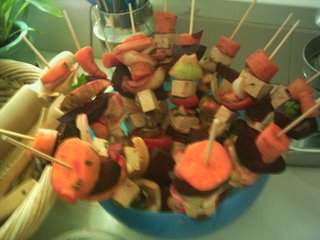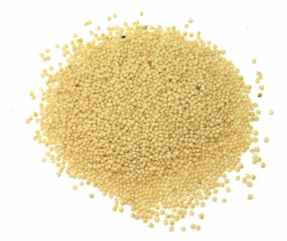 (photo from here)
(photo from here)
Getting organic vegetables from a small farm is truly an educational experience. We get to see quite a few things we never see in the supermarket.
The best example is the stalks and leaves of root vegetables. In theory, of course, one knows that root vegetables grow underground, and that they have some sort of leaves overground. After all, like many other Israeli kids, I grew on the wonderful story Grandpa Eliezer and the Carrot, which involves a whole family pulling out a carrot by its leaves in an attempt to get it out. But, of course, then one goes, as a kid, with one’s parents to the supermarket, where carrots are bald and leaves fear to tread.
Actually, the whole supermarket experience, if you’ll allow me a short rant, divorces kids from the source of their food. When I lived in Jerusalem and visited Frida, my neighbor, I used to listen to her conversations with the kids she worked with. Once, a kid saw her cut potatoes for fries. Completely horrified, he said: “Why are you cutting those potatoes?” Frida replied: “For fries”. The kid’s eyes widened. “You make fries out of potatoes?” “Sure, out of what else?” asked Frida. The kid shrugged his shoulders. “Out of a bag”. Similar exchanges demonstrated that kids were amazed that lemons grew on trees. All this stuff makes me thing that Barbara’s previously mentioned rant about folks’ ignorance regarding the source of their meat extends to other types of food, as well.
In any case, folks, root vegetables do have leaves. And when we get our weekly Chubeza box, we get to meet them. Beets and turnips (lefet) have large, spinach-like leaves. Carrots have thin leaves on long stalks, a bit reminscent of algae. This, of course, raises the question, what shall we do with them?
Here are a few ideas.
Beet leaves make wonderful leafy greens and can be used in any way chard, kale, or manguld are used. My next post, hopefully, will include a fun recipe for pasta with greens which uses beet leaves; pasta works extremely well with greens, and when cooked with beet leaves, it takes a fun and entertaining pink color.
Another usage for beet leaves is in omelettes, for the egg eaters. You start by sauteeing roughly chopped leaves in a bit of olive oil with garlic and your favorite fresh or dried herbs, then you spread your egg, or egg-and-yogurt, mix on top.
Many stir-fry dishes benefit from greens. As you can read in Barbara Fisher’s Stir-Fry Technique guide, one adds the vegetables in the order that they get soft, which means the leafy greens go in last. They are ready as soon as they begin to wilt. One of our favorite dishes in California, which we ate often in Chinese restaurants in Chinatown and at Long Life Vegi House, was tofu, mushrooms and greens; these three work really well together.
Leafy greens, including beet leaves, make good fillings for crusts and play well with cheese, garlic, sauteed onions and (yum) pine nuts.
As to carrot greens, or any leafy greens you’re not using, please, take them as soon as you get them, rinse them well, stick them (with or without their roots) in a giant pot with lots of fresh, clean water, and cook them for forty minutes. You get a wonderful pot of vegetable stock, which you can later use for the rest of the week. You can cook your grains and beans in it; you can add them to your sauces instead of water; they can be fabulous bases for any kind of soup; and, of course, you can drink them in the evening, instead of tea, as a nice, warm and healthy liquid treat.







